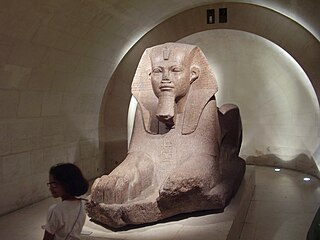
Tourism is travel for pleasure, and the commercial activity of providing and supporting such travel. UN Tourism defines tourism more generally, in terms which go "beyond the common perception of tourism as being limited to holiday activity only", as people "travelling to and staying in places outside their usual environment for not more than one consecutive year for leisure and not less than 24 hours, business and other purposes". Tourism can be domestic or international, and international tourism has both incoming and outgoing implications on a country's balance of payments.

Agritourism or agrotourism involves any agriculturally based operation or activity that brings visitors to a farm or ranch. It encompasses a wide range of activities, including direct-to-consumer sales such as farm stands and u-pick, agricultural education through school visits, hospitality services like overnight farm stays, recreational activities such as hunting and horseback riding, and entertainment events like hayrides and harvest dinners. These activities provide an additional source of income for farmers and help sustain small-scale farms.

Ecotourism is a form of nature-oriented tourism intended to contribute to the conservation of the natural environment, generally defined as being minimally impactful, and including providing both contributions to conservation and environmental education. The definition sometimes also includes being financially beneficial to the host community or making conservation financially possible. There are a range of different definitions, and the correct definition of the term was an active subject of debate as of 2009. The term is also used more widely by many organizations offering nature tourism, which do not focus on being beneficial to the environment.

A tourist attraction is a place of interest that tourists visit, typically for its inherent or an exhibited natural or cultural value, historical significance, natural or built beauty, offering leisure and amusement.

Slow Food is an organization that promotes local food and traditional cooking. It was founded by Carlo Petrini in Italy in 1986 and has since spread worldwide. Promoted as an alternative to fast food, it strives to preserve traditional and regional cuisine and encourages farming of plants, seeds, and livestock characteristic of the local ecosystem. It promotes local small businesses and sustainable foods. It also focuses on food quality, rather than quantity. It was the first established part of the broader slow movement. It speaks out against overproduction and food waste. It sees globalization as a process in which small and local farmers and food producers should be simultaneously protected from and included in the global food system.

Cultural tourism is a type of tourism in which the visitor's essential motivation is to learn, discover, experience and consume the cultural attractions and products offered by a tourist destination. These attractions and products relate to the intellectual, spiritual, and emotional features of a society that encompasses arts and architecture, historical and cultural heritage, culinary heritage, literature, music, creative industries as well as the living cultures with their lifestyles, value systems, beliefs and traditions.

Goygol District is one of the 66 districts of Azerbaijan, situated in the western part of the country within the Ganja-Dashkasan Economic Region. The district is bordered by districts of Goranboy, Kalbajar, Dashkasan, Shamkir, Samukh, and the city of Ganja. Its administrative center and largest city is Goygol, known for its historical and cultural significance, as well as its proximity to the renowned Goygol Lake. Originally established in the early 19th century as "Helenendorf" by German settlers, the area has evolved into a key region for agriculture and tourism in Azerbaijan. As of 2020, Goygol District has a population of approximately 64,600 residents. Its blend of rich cultural heritage, diverse historical influences, and stunning natural landscapes makes it a significant destination in the country.
Heritage tourism is a branch of tourism centered around the exploration and appreciation of a region's cultural, historical and environmental heritage. This form of tourism includes both tangible elements, such as historically significant sites, monuments, and artifacts, as well as intangible aspects, such as traditions, customs, and practices.

Sustainable tourism is a concept that covers the complete tourism experience, including concern for economic, social, and environmental issues as well as attention to improving tourists' experiences and addressing the needs of host communities. Sustainable tourism should embrace concerns for environmental protection, social equity, and the quality of life, cultural diversity, and a dynamic, viable economy delivering jobs and prosperity for all. It has its roots in sustainable development and there can be some confusion as to what "sustainable tourism" means. There is now broad consensus that tourism should be sustainable. In fact, all forms of tourism have the potential to be sustainable if planned, developed and managed properly. Tourist development organizations are promoting sustainable tourism practices in order to mitigate negative effects caused by the growing impact of tourism, for example its environmental impacts.

Culinary tourism or food tourism or gastronomy tourism is the exploration of food as the purpose of tourism. It is considered a vital component of the tourism experience. Dining out is common among tourists and "food is believed to rank alongside climate, accommodation, and scenery" in importance to tourists.

Rural tourism is a form of tourism that focuses on actively participating in a rural lifestyle. It can be a variant of ecotourism, emphasizing sustainable practices and community involvement. Many villages can facilitate tourism because of the hospitality and eagerness of villagers to welcome or host visitors. The mechanization of agriculture has reduced the need for manual labor, leading to economic pressures on some villages and prompting young people to migrate to urban areas. However, a segment of the urban population is increasingly interested in visiting rural areas to experience and understand the rural lifestyle.

Tourism in Kenya is Kenya's third largest source of foreign exchange revenue, following diaspora remittances and agriculture. The Kenya Tourism Board is responsible for maintaining information about tourism in Kenya.
Food history is an interdisciplinary field that examines the history and the cultural, economic, environmental, and sociological impacts of food and human nutrition. It is considered distinct from the more traditional field of culinary history, which focuses on the origin and recreation of specific recipes.

Heritage commodification is the process by which cultural themes and expressions come to be evaluated primarily in terms of their exchange value, specifically within the context of cultural tourism. These cultural expressions and aspects of heritage become "cultural goods," transformed into commodities to be bought, sold and profited from in the heritage tourism industry. In the context of modern globalization, complex and often contradictory layers of meaning are produced in local societies, and the marketing of one's cultural expressions can degrade a particular culture while simultaneously assisting in its integration into the global economy. The repatriation of profits, or "leakage", that occurs with the influx of tourist capital into a heritage tourist site is a crucial part of any sustainable development that can be considered beneficial to local communities. Modern heritage tourism reproduces an economic dynamic that is dependent upon capital from tourists and corporations in creating sustained viability. Tourism is often directly tied to economic development, so many populations see globalization as providing increased access to vital medical services and important commodities.
Máirtín Mac Con Iomaire is an Irish lecturer and professional chef. He was awarded Ireland's first PhD on food history, in October 2009.

Fashion tourism is a niche market segment evolved out of three major sectors: Creative Tourism, Cultural Tourism and Shopping Tourism. Fashion Tourism can be defined as “the interaction between Destination Marketing Organizations (DMOs), trade associations, tourism suppliers and host communities, with people travelling to and visiting a particular place for business or leisure to enjoy, experiment, discover, study, trade, communicate about and consume fashion.”
Tourism impacts tourist destinations in both positive and negative ways, encompassing economic, political, socio-cultural, environmental, and psychological dimensions.
Anthropology of food is a sub-discipline of anthropology that connects an ethnographic and historical perspective with contemporary social issues in food production and consumption systems.

Slow tourism is an alternative tourism choice in contrast to mass tourism. Slow tourism is a part of the sustainable tourism family, different from mainstream tourism and emphasizing the tourist’s greater personal awareness. It is characterized by reducing mobility and by taking time to explore local history and culture, while supporting the environment. The concept emerged from the Italian Slow Food movement and the Cittaslow movement.
Tourism has been an ever-growing industry in the Kodagu district of India. The impacts of tourism in Kodagu district effect the country's economy, environment, and culture. The impacts can be positive and negative. Ecotourism and homestays have been adopted to provide stable household income, and promote environmental awareness and cultural experiences to foreign travellers. Economic impacts include overall income increasing from employment but jobs were usually seasonal. Environmental impacts like funding from tourism would support conservation efforts and natural resource management but would bring pollution and biodiversity degradation to the district. Sociocultural impacts where residents of Kodagu like having tourists but risk losing access to resources. Kodagu district is commonly known as the "Scotland of India". The district is a hotspot for tourism and recreational activities. The mountainous Kodagu region is filled with biologically diverse tourist attractions such as waterfalls, forests, and wildlife which can be impacted by tourism.













